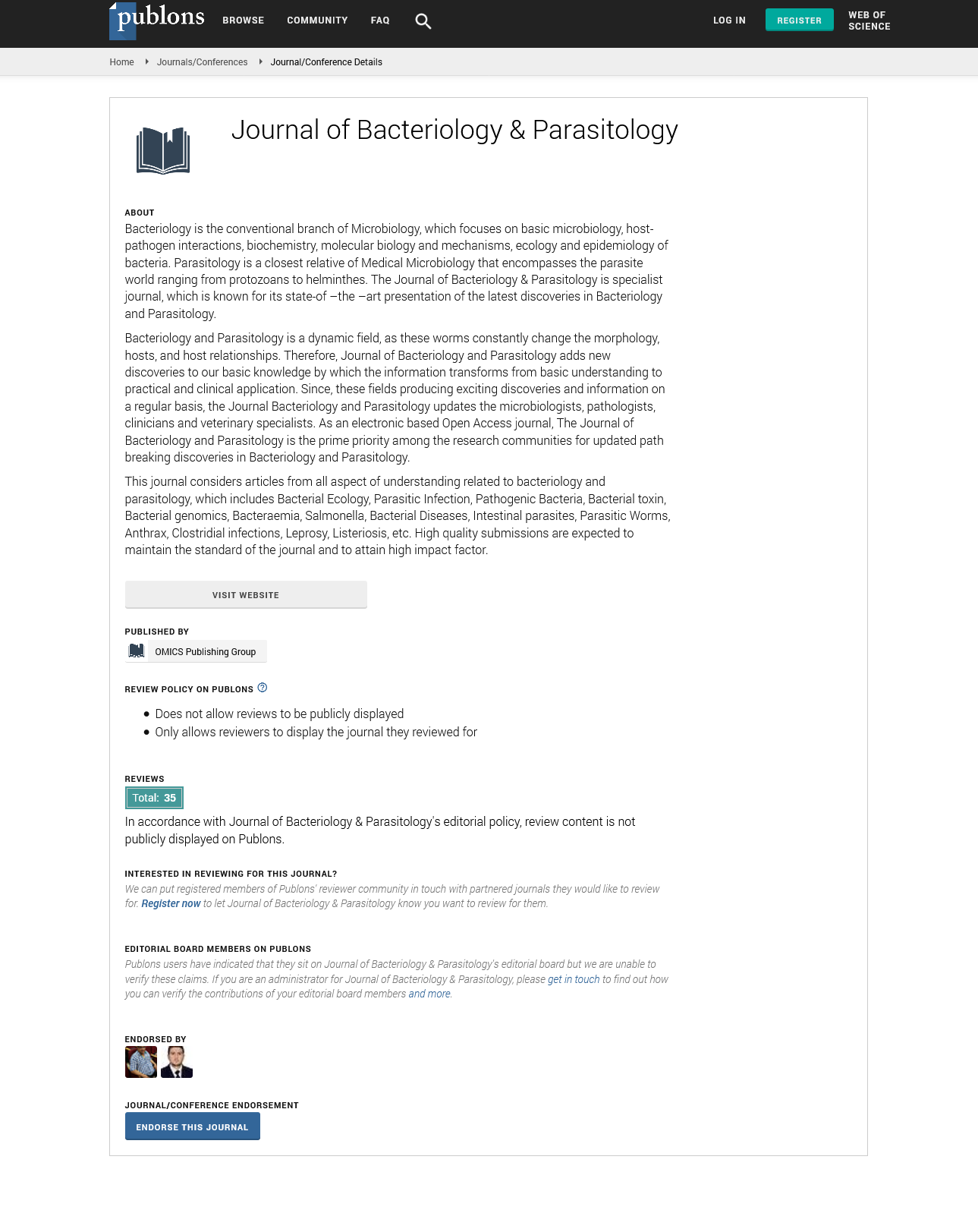Indexed In
- Open J Gate
- Genamics JournalSeek
- Academic Keys
- JournalTOCs
- ResearchBible
- Ulrich's Periodicals Directory
- Access to Global Online Research in Agriculture (AGORA)
- Electronic Journals Library
- RefSeek
- Hamdard University
- EBSCO A-Z
- OCLC- WorldCat
- SWB online catalog
- Virtual Library of Biology (vifabio)
- Publons
- MIAR
- Geneva Foundation for Medical Education and Research
- Euro Pub
- Google Scholar
Useful Links
Share This Page
Journal Flyer

Open Access Journals
- Agri and Aquaculture
- Biochemistry
- Bioinformatics & Systems Biology
- Business & Management
- Chemistry
- Clinical Sciences
- Engineering
- Food & Nutrition
- General Science
- Genetics & Molecular Biology
- Immunology & Microbiology
- Medical Sciences
- Neuroscience & Psychology
- Nursing & Health Care
- Pharmaceutical Sciences
Clinical and laboratory features of Cryptosporidium-associated diarrhea in children under 5 years old
5th International Conference on PARASITOLOGY & MICROBIOLOGY
July 12-13, 2018 Paris, France
Elena Starikova and Natalia Shubina
Siberian State Medical University, Russia
Scientific Tracks Abstracts: J Bacteriol Parasitol
Abstract:
Background: Cryptosporidiosis is the protozoan infection increasingly recognized as an important global health concern. While initially reported in immunocompromised such as AIDS patients, cryptosporidiosis has now been documented as a major cause of childhood diarrhea. Cryptosporidium is one of the main reasons of childhood mortality and morbidity in tropical and subtropical countries. Aim: The aim of this study was to analyze the cryptosporidiosis rate and the clinical outcomes of diseases in children under 5 years with diarrhea in Tomsk, Russia. Methodology: One-stage comparative survey was performed in 107 children less than 5 years old admitted to the hospital with acute diarrhea. Fecal material was analyzed with the use of Ziehl-Nielsen staining for presence of Cryptosporidium oocytes. Viral and bacterial intestinal pathogens were analyzed with the use of bacteriological methods and polymer chain reaction. Findings: Children included in the study were hospitalized with watery stool from 3 to 10 times a day, lethargy, decreased appetite, vomiting. Cryptosporidium oocytes were identified in 28 (26%) fecal samples of children with acute diarrhea. Bacterial and viral pathogens accompany cryptosporidiosis in 92.5% of cases with rotavirus as most frequent concurrent infection. The value of body temperature was 38.6 (37.9; 39.1)°C in the group without cryptosporidiosis and 38.8 (38.1; 39.4)°C in patients with identified Cryptosporidium oocysts (p=0.410). The number of leukocytes in the group with a positive result for cryptosporidiosis was 13 (9.2; 16) x109/l, which significantly differs from the corresponding value in the group of patients without cryptosporidiosis 8.3 (6.1; 11.2) x109/l (p<0.001). The antibiotics were more frequently prescribed for cryptosporidiosis-positive children compared with cryptosporidium-free patients (p=0.026). Conclusion & Significance: Concurrent cryptosporidium infection in most cases is combined with other etiological agents. This can increase the severity of diarrhea in children under five years of age that lead to more frequent antibiotics administration.
Biography :
Elena Starikova has the experience in the field of parasitology diagnostics. She is developing new assays for molecular biological identification of parasitic infections. Having an expertise in immune system functioning she is applying this knowledge to research of host-parasite interaction
E-mail: elena.g.starikova@yandex.ru

